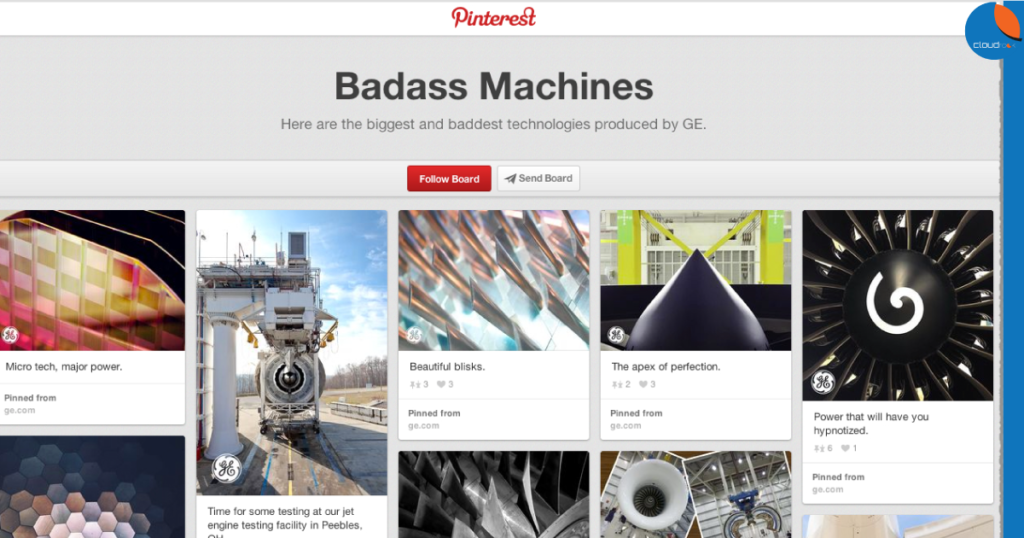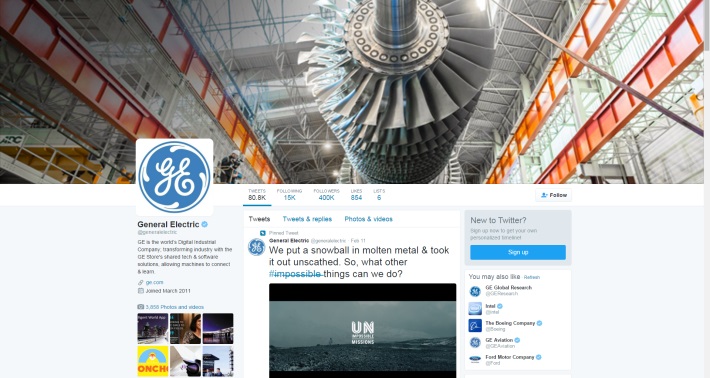General Electric (GE) Social Media Case Study

When you think about sexy brands on social media, the last brand that would come to mind would be a bureaucratic 122-year-old industrial company with 305,000 employees.
But General Electric (GE) is one of the most exciting B2B companies in social media today.
It has been nominated and won numerous awards such as Best Brand on Vine, Best Fortune 500 Brand on Social Media, Twitter and Instagram categories.
GE’s much lauded approach was to humanise its brand, educate its followers and of course posting stunning visuals of its technology in action.
“Social started because we wanted to be having conversations with people: consumers, employees, investors, and anybody else that shares our passions,” says GE Chief Marketing Officer, Linda Boff. “We try hard to focus on where we have the greatest opportunity to tell our story in a rich, accessible way.”
Building the Bond of Emotional Equity

GE’s social media metrics focus primarily on engagement and having conversations with its audiences to build the bond of emotional equity.
It’s not about sales – it’s about people and building relationships with them. They have found that when they take the long term view of having conversations on social media with potential customers, these customers will tell their friends and colleagues about it. Word-of-mouth is still the most powerful form of marketing after all.
Good storytelling is the core element behind its social media strategy. The audience always come first. GE’s social media team then find out and create the types of content that resonates with them and experiment with different platforms to find out the most compelling way to deliver their brand story.
GE’s Moon Landing Campaign
In its quest to find better ways to tells the GE story to its audience, GE constantly experiments with new formats and approaches.
For example, during the 45th anniversary of the first moon landing, GE partnered with JackThreads and Android Homme to release a limited edition Missions moon boot sneakers. Bear in mind that GE neither manufactures nor sells foot ware as a business.

However, GE did supply materials used to make boots and helmets for Buzz Aldrin, Neil Armstrong and Micheal Collins back in 1969 so the campaign was a nod to its contributions to such a significant moment in history.
The sneakers were built using advanced materials that GE uses in its other business units such as jet engines, wind turbines and healthcare equipment.
Let’s face it, the average social media consumer wouldn’t care about these so-called Super Materials used to make industrial equipment.
But sneakers made out of Super Materials are super cool. It makes what GE is doing relatable and helps the brand appear more human.
Essentially, they ingeniously used the product itself as a vehicle for communication. It helps tie together GE’s story – the role it played in the first moon landing and the innovations and contributions to science it is still making today.
GE has never been afraid of tackling new channels. The sneakers were unveiled on Snapchat and were GE’s debut on that social media channel.
Other than exploring SnapChat with its moon boots, it also took advantage of the now-defunct Vine by launching the #6secondsciencefair in 2013.
“Real-time marketing is the ability in near real time to produce a response through content, experiences or service to a live event or customer event that delights your audience or customer into engaging with your brand around a shared moment.”
